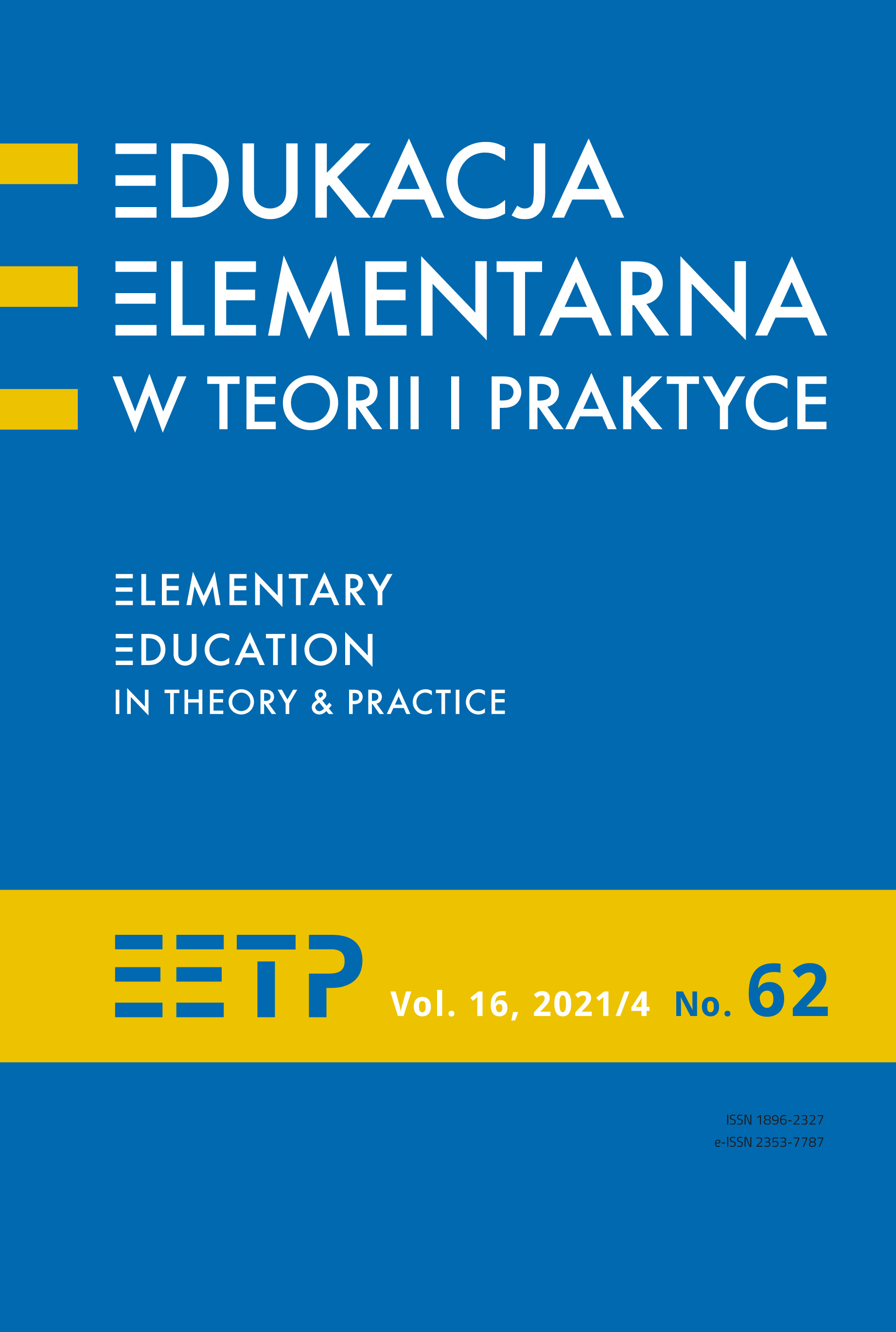Językowe rytuały fatyczne w publikacjach edukacyjnych
Abstrakt
Artykuł zawiera analizę wybranych publikacji edukacyjnych skierowanych do dzieci uczących się czytać, a także do uczniów pogłębiających wiedzę o języku. Celem analizy jest odpowiedź na pytania: Jakie językowe rytuały fatyczne są obecne w analizowanych tekstach? Jak jest minimalizowany lub maksymalizowany dystans poznawczy, językowy i społeczny między uczestnikami dyskursu edukacyjnego? Prezentowane w artykule ujęcie deskryptywne dotyczy językowych i stylistycznych sposobów kreowania wspólnoty fatycznej przede wszystkim w kontakcie z dziećmi uczącymi się czytać, a także – z samodzielnie czytającymi uczniami. Analiza zmierza do wskazania środków, które służą budowaniu wspólnoty fatycznej, oraz do uchwycenia specyfiki rytuałów fatycznych w zależności od statusu odbiorcy.
Bibliografia
Cieszyńska J. (2012). Kocham uczyć czytać. Poradnik dla rodziców i nauczycieli. Kraków: Wydawnictwo Edukacyjne.
Dędza E. (2009). Rozumiem, co czytam. Karty pracy do czytania ze zrozumieniem, pisania i wykorzystania wiedzy w praktyce dla uczniów w wielu od 7 do 11 lat. Świecie: Wydawnictwo Olimp.
Drabik B. (2010). Językowe rytuały tworzenia więzi interpersonalnej. Kraków: Wydawnictwo Uniwersytetu Jagiellońskiego.
Fulghum R. (1991). Wszystkiego, co naprawdę trzeba wiedzieć, nauczyłem się w przedszkolu, tłum. I. Doleżal-Nowicka, Warszawa: Instytut Prasy i Wydawnictw Novum.
Karaś H. (2005). Wędrówki językowe. Podręcznik do kształcenia językowego dla klasy I gimnazjum. Goleszów: Wydawnictwo Publisher-Innowacje.
Krzyżanek J. (2017). Pieski Tereski. Czytam sylabami, Poznań: Wydawnictwo Publicat S.A.
Marcjanik M. (2007). Grzeczność w komunikacji językowej, Warszawa: Wydawnictwo Naukowe PWN.
Marcjanik M. (2009). Mówimy uprzejmie poradnik językowego savoir-vivre’u, Warszawa: Wydawnictwo Naukowe PWN.
Nocoń J. (2009). Podręcznik szkolny w dyskursie dydaktycznym – tradycja i zmiana, Opole: Wydawnictwo Uniwersytetu Opolskiego.
Plec A., Skoczylas M. (2007). Elementarz. Teksty do czytania metodą sylabową, Inowrocław: Wydawnictwo „Pasja”.
Spitzer M. (2021). Jak uczy się mózg, tłum. M. Guzowska-Dąbrowska, Warszawa: Wydawnictwo Naukowe PWN.
Zakrzewska B. (2008). Chcę dobrze czytać, Gdańsk: Wydawnictwo Harmonia.
Zakrzewska B. (2012). 3, 2, 1, 0… Start. Czytanie treningowe, Gdańsk: Wydawnictwo Harmonia.
Zgółkowie H. i T. (2001). Mówię, więc jestem. Podręcznik języka polskiego dla licealistów, Kraków: Spółka Wydawnicza „Od nowa”.
Żylińska M. (2013). Neurodydaktyka. Nauczanie i uczenie się przyjazne mózgowi, Toruń: Uniwersytet Mikołaja Kopernika.Gąsiorek K., Hącia A., Kłosińska K., Krzyżyk D., Nocoń J., Synowiec H. (2013). Kryteria oceny podręcznika szkolnego w aspekcie językowym. Przewodnik dla rzeczoznawców wraz ze wzorami opinii, format pdf: https://men.gov.pl/wp.../za_5_przewodnik_dla_rzeczoznawcw_wersja_zmieniona.doc (dostęp: 29.04.2018).
Wolański A. (2008). My zamiast ja, [w:] https://sjp.pwn.pl/poradnia/haslo/my-zamiast-ja;9741.html (dostęp: 30.04.2021).
Copyright (c) 2021 Edukacja Elementarna w Teorii i Praktyce

Utwór dostępny jest na licencji Creative Commons Uznanie autorstwa – Bez utworów zależnych 4.0 Międzynarodowe.
1. Autor zgłaszając swój artykuł oświadcza, że jest Autorem artykułu (zwanego dalej Utworem) i:
- przysługują mu wyłączne i nieograniczone prawa autorskie do Utworu,
- jest uprawniony/a do rozporządzania prawami autorskimi do Utworu.
Oświadcza, że nie narusza praw autorskich osób trzecich i praw prawnych.
Oświadcza, że nie występuje żaden konflikt interesów.
2. Udziela Uniwersytetowi Ignatianum w Krakowie nieodpłatnej, niewyłącznej, nieograniczonej terytorialnie licencji do korzystania z Utworu na następujących polach eksploatacji:
- utrwalania utworu w formie papierowej, a także na nośniku cyfrowym lub magnetycznym;
- zwielokrotnienia utworu dowolną techniką, bez ograniczenia ilości wydań i liczby egzemplarzy;
- rozpowszechniania utworu i jego zwielokrotnionych egzemplarzy na jakimkolwiek nośniku, w tym wprowadzenia do obrotu, sprzedaży, użyczenia, najmu;
- wprowadzenia utworu do pamięci komputera;
- rozpowszechniania utworu w sieciach informatycznych, w tym w sieci Internet;
- publicznego wykonania, wystawienia, wyświetlenia, odtworzenia oraz nadawania i reemitowania, a także publicznego udostępniania utworu w taki sposób, aby każdy mógł mieć do niego dostęp w miejscu i czasie przez siebie wybranym;
- w zakresie praw zależnych do Utworu, obejmujących w szczególności prawo do dokonania koniecznych zmian w Utworze, wynikających z opracowania redakcyjnego i metodycznego, a także do dokonania tłumaczenia Utworu na języki obce.
Udzielenie licencji następuje z chwilą przekazania Utworu na rzecz Uniwersytetowi Ignatianum w Krakowie. Uniwersytet Ignatianum w Krakowie jest uprawniony do udzielania dalszych sublicencji do Utworu, w zakresie udzielonego prawa. Licencja jest ograniczona czasowo i zostaje udzielona na okres 15 lat, licząc od daty jej udzielenia.
Wyraża się zgodę i zachęca autorów do publikacji ich tekstu w Internecie (np. w repozytorium instytucji lub na jej stronie internetowej) przed lub podczas procesu składania tekstu jako, że może to prowadzić do korzystnych wymian oraz wcześniejszego i większego cytowania opublikowanego tekstu (Patrz The Effect of Open Access). Zalecamy wykorzystanie dowolnego portalu stowarzyszeń badawczych z niżej wymienionych:




